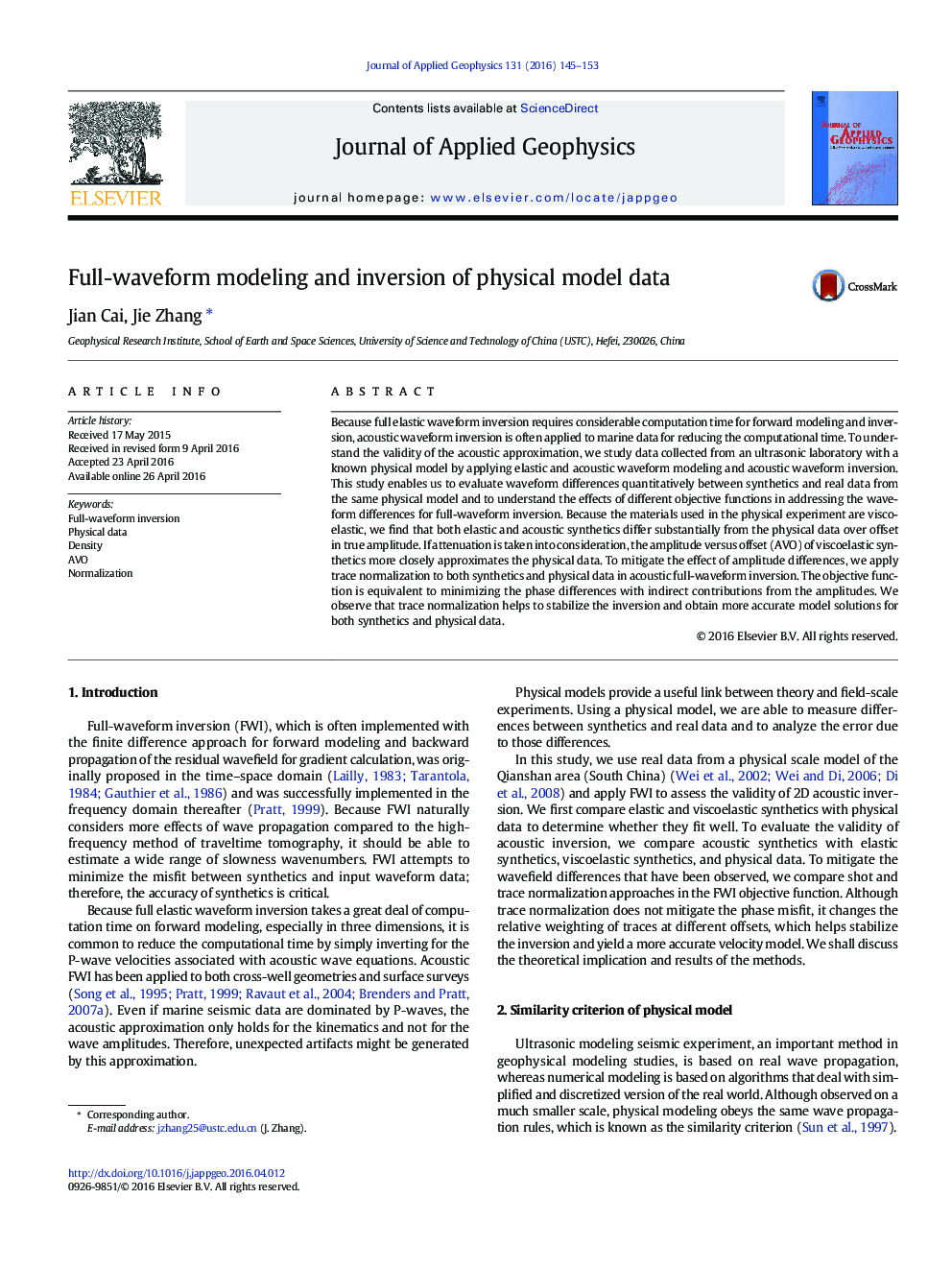| Article ID | Journal | Published Year | Pages | File Type |
|---|---|---|---|---|
| 4739736 | Journal of Applied Geophysics | 2016 | 9 Pages |
•Waveform differences between synthetics and physical data are observed and analyzed.•Objective functions for acoustic FWI have been evaluated with synthetics and real data.•Trace normalization method allows fitting physical data better under acoustic assumption.
Because full elastic waveform inversion requires considerable computation time for forward modeling and inversion, acoustic waveform inversion is often applied to marine data for reducing the computational time. To understand the validity of the acoustic approximation, we study data collected from an ultrasonic laboratory with a known physical model by applying elastic and acoustic waveform modeling and acoustic waveform inversion. This study enables us to evaluate waveform differences quantitatively between synthetics and real data from the same physical model and to understand the effects of different objective functions in addressing the waveform differences for full-waveform inversion. Because the materials used in the physical experiment are viscoelastic, we find that both elastic and acoustic synthetics differ substantially from the physical data over offset in true amplitude. If attenuation is taken into consideration, the amplitude versus offset (AVO) of viscoelastic synthetics more closely approximates the physical data. To mitigate the effect of amplitude differences, we apply trace normalization to both synthetics and physical data in acoustic full-waveform inversion. The objective function is equivalent to minimizing the phase differences with indirect contributions from the amplitudes. We observe that trace normalization helps to stabilize the inversion and obtain more accurate model solutions for both synthetics and physical data.
